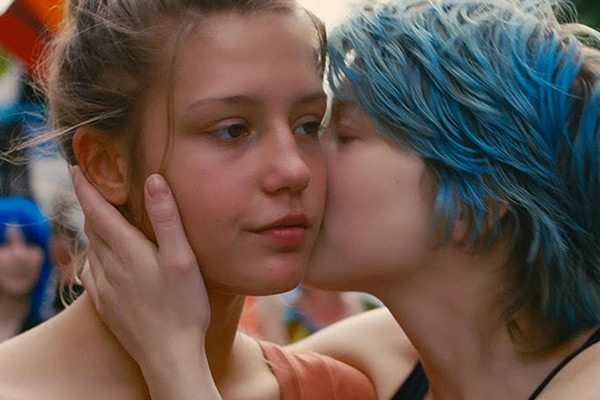Blue Is the Warmest Colour
Directed by Abdellatif Kechiche
Blue Is the Warmest Colour, directed by Abdellatif Kechiche, has been praised by some as the best movie of 2013, as well as unanimously winning the Palme d’Or at Cannes and being nominated for a BAFTA and Golden Globe. After watching the film myself, it was easy to see why.
(Warning: Unless you want complete lack of eye contact, followed by several years of awkwardness, do not watch this film with your parents).
Blue Is the Warmest Colour follows Adèle (Adele Exarchopolous), a quiet and reticent high-school student with a passion for English and French literature, as she discovers her sexuality and enters into a relationship with Emma (Lea Seydoux), an art student several years her senior.
Exarchopolous is cast excellently in the role of Adèle and plays the part with perfection, shifting effortlessly from an introverted teen struggling to accept her sexuality in the face of her peers, to a fiery young woman who is head-over-heels in love. Seydoux is also a natural fit for her role, as she embodies a mysterious allure and has such powerful onscreen chemistry with Exarchopolous that you could mistake their romance as also happening off-screen.
Despite limited screen time, the supporting actors all do a wonderful job judging, accepting or flirting with Adèle depending on their role, and help form some of the best scenes in the film. In one particular scene Emma meets Adèle’s parents, whose disapproval of her artistic and free-spirited personality is obvious through the veneer of their social niceties, forming an almost palpable tension.
In Blue Is the Warmest Colour, Kechiche combines a brilliantly written script with subtle yet captivating cinematography and two exceptional performances from Exarchopolous and Seydoux. This film will intrigue, appal and engross the audience from the very first scene. In what has been a strong year for cinema, Blue Is the Warmest Colour is a film that demands attention amongst its peers and could certainly claim to be the best film of 2013.



